Success Cases
Project description
A typical multi-apartment post-Soviet style residential building was chosen to 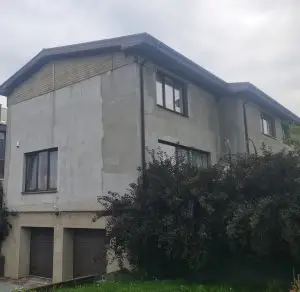 demonstrate new renovation opportunities. The total floor area of the building is 1100m2 and the total area of external walls is 1350 m2. Two apartments on the ground and first floor of the building were selected to test Bio4EEB technologies. The rest of the building will be insulated with stone wool in traditional way.
demonstrate new renovation opportunities. The total floor area of the building is 1100m2 and the total area of external walls is 1350 m2. Two apartments on the ground and first floor of the building were selected to test Bio4EEB technologies. The rest of the building will be insulated with stone wool in traditional way.
Project description
This demo case residential complex was built in 1929 and is located at the northern part of Mallorca Island.This building is listed in the Catalogue of Elements of Artistic, Historical, Environmental and Heritage interest in Mallorca. Its protection level is subject to protection of certain elements, such as facades, terraces and gardens.
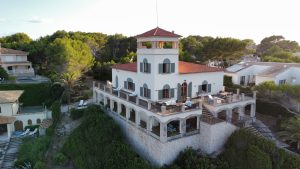
Project description
This demo case was built in 1950 as detached single family house, now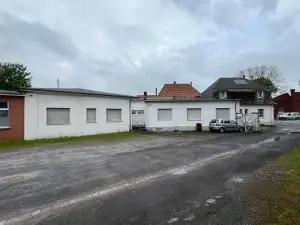 it will be restructured, modernised andextended as an apartment house with 3 condominiums. The total floor area is 425 m² + 112 m² in the cellar. The total area of external walls is 420 m². The purpose of this demo-case is to demonstrate the application of the BIO4EEB technologies in new and existing buildings. The prefabricated rooftop extension and the new north façade were selected to test Bio4EEB technologies as panels and insulation on the exterior walls and on the roof.
it will be restructured, modernised andextended as an apartment house with 3 condominiums. The total floor area is 425 m² + 112 m² in the cellar. The total area of external walls is 420 m². The purpose of this demo-case is to demonstrate the application of the BIO4EEB technologies in new and existing buildings. The prefabricated rooftop extension and the new north façade were selected to test Bio4EEB technologies as panels and insulation on the exterior walls and on the roof.
Project description
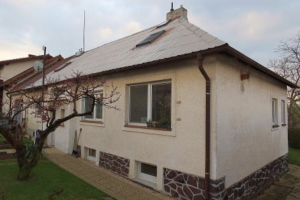 The un-refurbished Czech rural houses built in the period 1921-1945 have rather poor energy performance. The energy saving potential of this part of the Czech housing stock is worth paying attention. About 60-70% of rural buildings originating from the pre-war period do not meet the current energy efficiency standards.
The un-refurbished Czech rural houses built in the period 1921-1945 have rather poor energy performance. The energy saving potential of this part of the Czech housing stock is worth paying attention. About 60-70% of rural buildings originating from the pre-war period do not meet the current energy efficiency standards.
Project description
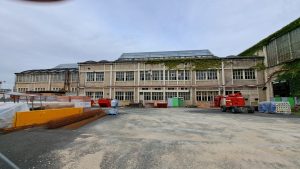 The project in question is in-house project of BOUYGUES CONSTRUCTION, it is about the transformation of an industrial site (a chocolate factory) in several types of buildings: housing, co-living space, presence of a hotel and all this in the urban environment of the Ile de France region. Several of the existing buildings are protected as historic monument.
The project in question is in-house project of BOUYGUES CONSTRUCTION, it is about the transformation of an industrial site (a chocolate factory) in several types of buildings: housing, co-living space, presence of a hotel and all this in the urban environment of the Ile de France region. Several of the existing buildings are protected as historic monument.
Frequently Asked Questions
Why are bio-based insulation materials important?
While bio-based insulation materials keep the environmental footprint of buildings significantly lower, they also improve the insulation properties and increase durability with lower maintenance costs.
Why should i choose a bio-based insulation?
Bio-based materials have a lower environmental footprint, have non-toxic materials, improve moisture regulation and offer comparable thermal performance with other traditional materials.
What is Posidonia, and why is it used in BIO4EEB’s insulation materials?
Posidonia is a seagrass native to the Mediterranean Sea, naturally available as washed-up biomass on shorelines. In BIO4EEB, it is used as a sustainable raw material for insulation panels thanks to its excellent thermal and acoustic properties, natural resistance to pests and decay, and low environmental impact.
Are BIO4EEB materials suitable for different building types and climates?
Yes. BIO4EEB products are being tested and demonstrated in several European climates, from Mediterranean to Continental regions, through pilot sites in France, Spain, Germany, Lithuania and Czechia.
Are the materials developed by BIO4EEB suitable for retrofit of existing buildings, or only for new buildings?
BIO4EEB materials are designed primarily for building renovation and retrofit, helping to improve the energy performance and comfort of existing buildings. However, they can also be applied in new construction projects, offering versatile solutions for different contexts.
Are BIO4EEB bio-based insulation materials fire-resistant?
Yes. All bio-based insulation and coating products are being tested and the project partners work to ensure that bio-based materials meet safety requirements comparable to conventional products, while maintaining environmental performance and indoor health benefits.
Will there be training, webinars or workshops related to BIO4EEB?
Yes BIO4EEB organises 3 training days, the first one is scheduled on December 9th 2025 in Brussels. Also the training materials are uploaded on the resource section of the website. Please follow BIO4EEB social media channels to receive the updates on online registrations.
Other relevant approaches
Below you can find a list of other sister projects.
Website
https://platform.energymatching.eu/
Description
Ad-hoc options of RES envelope solutions can be selected via a dedicated platform.
Website
Description
Envelope products and systems contributing to next generation of healthy nearly Zero Energy Buildings are available for testing and application.
Website
https://www.metabuilding.com/about
Description
The Metabuilding Platform offers services to providers of innovative building components to test and certify their products.
Website
https://www.biomat-testbed.eu/
Description
An Open Innovation Test Bed (OITB) for Nano-Enabled Bio-Based PUR Foams and Composites, with a number of services for product providers: https://www.biomat-testbed.eu/services
Website
https://renovation-hub.eu/case-studies/
Description
A series of case studies showing viable solutions for deep renovation in buildings.
Website
https://cordis.europa.eu/project/id/101092339
Description
An Open Innovation Ecosystem for efficient and fast up-scaling of sustainable advance, nano-enabled materials and components for buildings’ envelopes towards zero energy buildings (nZEBs).
Website
https://www.reincarnate-project.eu/
Description
Reincarnation of construction products and materials by slowing down and extending cycles, via a Circular Potential Assessment Information Management and Decision-Making platform (CP-IM) powered by digital twin representation, artificial intelligence, and robotic automation.